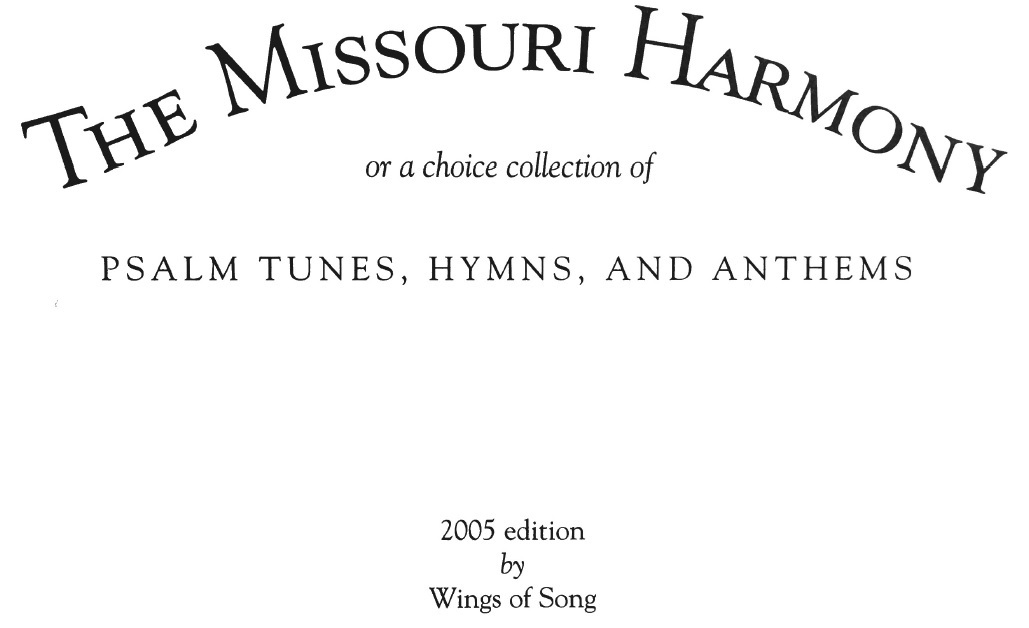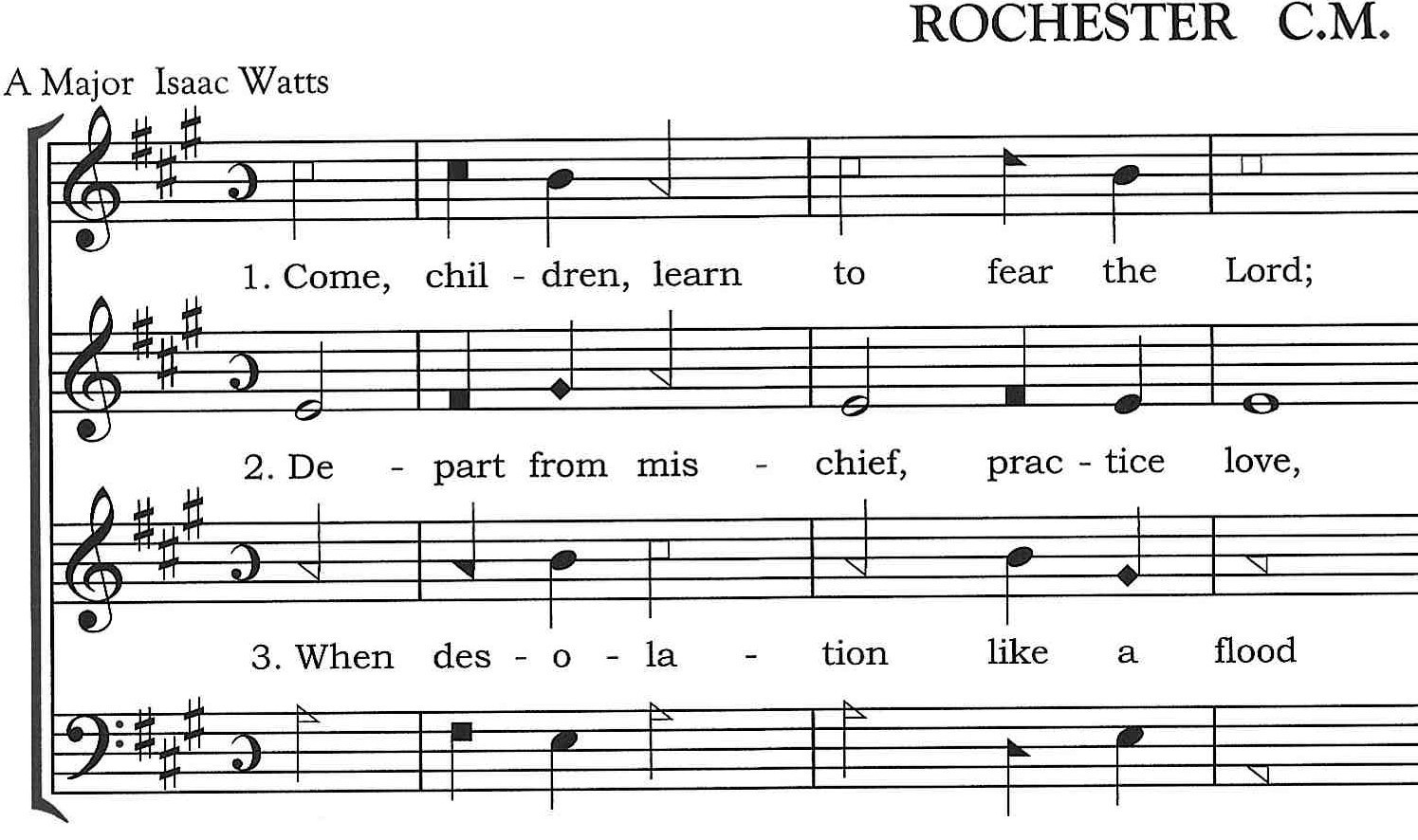



The Missouri Harmony, or, a Collection of Psalm and Hymn Tunes, and Anthems: an Introduction to the Grounds and Rudiments of Music was first published in 1820 by Allen Dickenson Carden (1792-1859). Carden introduced his new book at a singing school he was teaching in St. Louis, Missouri. It became the most popular tune book of its day. Its usage reached from St. Louis to Wisconsin and southeast into Tennessee and the Deep South.
Carden used a music notation where the note heads have different shapes. This shape-note system was patented about 20 years earlier by William Little and William Smith in their tune book The Easy Instructor. Little and Smith's shape-note system uses a right-angle triangle for "Fa," a circle for "Sol," a square for "La," and a diamond for "Mi." The major scale is Fa, Sol, La, Fa, Sol, La, Mi, Fa--a scale system that was used by early immigrants from England when they came to America. Since 1810, Little and Smith's shape-note system has become the standard shape-note system for all subsequent books.
Cincinnati was the only industrial center in the West at this point in American history. It was here that Carden found a printing company to have his book printed. This company owned the type setting font that was needed to print shape-note music notation.
By 1824, Carden moved back to Nashville, Tennessee. At this same time, Carden no longer had an editorial role or financial interest in The Missouri Harmony. Carden would later publish The Western Harmony (1824) and The United States Harmony (1829).
The Missouri Harmony went through 10 revisions and at least 23 editions between 1820 and 1857. The printing company took over revising and reprinting the book. The first apparent revision was in 1835 when the publishers added a 38-page supplement. The supplement was compiled "by an amateur," the page numbering system began with page one, and the supplement had its own index.
Another new edition was released in 1850. The book had been completely reworked by "scientific musician" Charles Warren, of Cincinnati, who had corrected "several errors in the harmony." Some of these "errors" were those that Warren had perceived as errors. Parallelisms, unprepared and unresolved dissonances, incomplete chords, and retrogressive patterns were "corrected," and the melodic nature of a harmony part became less interesting to sing. By the time the Civil War began, The Missouri Harmony had declined in usage, and the book was out of print and fell into obscurity.
In the 1980s, a modern-day St. Louis shape-note singer found the 1835 edition The Missouri Harmony in the Library of Congress. She fed a copy machine full of coins to copy the entire book. In 1994, the University of Nebraska Press agreed to publish a facsimile edition based on the photocopies that were made at the Library of Congress.
It soon became apparent that it was a little difficult to sing from the facsimile edition due to blurry print and misprints in some places. The St. Louis singers decided it was time to work on a new and modern edition of The Missouri Harmony, based on the 1835 edition; a committee was appointed to work on this project. The committee began by deciding on implementing the following factors: 1) the new edition would be used as a supplement at singings using The Sacred Harp, 1991 Edition; 2) since the revision would be used as a supplement, any tune that could also be found in The Sacred Harp, 1991 Edition (Denson Revision) was to be omitted (with few certain exceptions); 3) the supplement that was compiled by "an amateur" would be omitted; and 4) compositions would be added by "some of the most approved and eminent composers, both ancient and modern."
Today, The Missouri Harmony, 2005 Revision is used as a supplement at Sacred Harp singings that use the Denson Revision in the states of Missouri, Arkansas, and Illinois.
Sources:
Carden, Allen D. The Missouri Harmony, or, a Collection of Psalm and Hymn Tunes, and Anthems: an Introduction to the Grounds and Rudiments of Music, (Lincoln: University of Nebraska Press, 1994)
Carden, Allen D. The Missouri Harmony: or, a Choice Collection of Psalm Tunes, Hymns, and Anthems, (Saint Louis: Wings of Song. 2005).
McLemore, B. F. Tracing the Roots of Southern Gospel Singers, (Jasper, TX: B. F. (Bob) McLemore, 2005).
McNeil, W. K. Encyclopedia of American Gospel Music, (New York: Routledge, 2013).